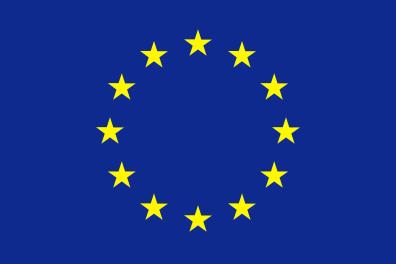This goes
to space
SMILE
The Solar wind Magnetosphere Ionosphere Link Explorer (SMILE) is a joint mission between the European Space Agency (ESA) and the Chinese Academy of Sciences (CAS) to investigate how the solar wind interacts with Earth’s magnetic environment. The spacecraft consists of two primary modules: the Payload Module, built by ESA and developed by Airbus, and the Platform, provided by CAS. The Payload Module houses three of the four scientific instruments, along with the X-band telemetry system and the payload data handling unit. The Platform contains the propulsion subsystem, service equipment, and two ion detector heads.
SMILE carries four scientific instruments: the Soft X-ray Imager, the Ultraviolet Imager, the Light Ion Analyzer, and the Magnetometer. The Soft X-ray Imager is a wide field-of-view telescope that uses “lobster-eye” micropore optics and two large CCDs to detect soft X-rays in the 0.2–2.5 keV energy range. It provides global images of key magnetospheric boundaries such as the bow shock, magnetopause, and cusps by observing X-rays produced through solar wind charge exchange with neutral atoms. The Ultraviolet Imager is a 4-mirror ultraviolet telescope observing auroral emissions in the 160–180 nm band. It features a 10° × 10° field of view, 150 km spatial resolution at apogee, and 60-second cadence, allowing it to continuously monitor auroral activity.
The in situ instruments include the Light Ion Analyzer and the Magnetometer. The Light Ion Analyzer measures three-dimensional velocity distributions of protons and alpha particles in the 0.2–20 keV energy range, enabling detailed analysis of solar wind plasma entering the near-Earth environment. The Magnetometer consists of two fluxgate sensors mounted on a 3-metre boom, designed to minimize spacecraft magnetic interference while measuring vector magnetic fields and their gradients. These instruments work together to link large-scale magnetospheric dynamics with local space plasma conditions.
SMILE will operate in a highly elliptical, high-inclination Earth orbit with a perigee of about 5,000 km and an apogee of 121,182 km (around 19 Earth radii). This orbit allows uninterrupted observations for over 40 hours per orbit. The total launch mass is approximately 2,300 kg, which includes about 1,600 kg of propellant. SMILE is equipped with a single 490 N engine to achieve its final science orbit.
Courtesy of ESA.

On this
rocket
Vega-C
ESA’s Vega-C is a next-generation launch vehicle that succeeds the original Vega rocket, offering enhanced performance, greater payload volume, and increased competitiveness. Operating from Europe’s Spaceport in French Guiana, Vega-C strengthens Europe’s independent access to space and supports a wider range of missions, including return-to-Earth operations with ESA's upcoming reusable Space Rider vehicle.
Specs
Height: 34.8 m (114 ft)
Diameter: 3.4 m (11 ft)
Mass: 210,000 kg (460,000 lb)
Stages: 4
Payload to sun-synchronous orbit: 2,300 kg (5,100 lb)
Payload to polar orbit: 2,250 kg (4,960 lb)
Vega-C is designed to accommodate a variety of missions, from launching small CubeSats to carrying a single large satellite. It features significant upgrades over its predecessor, including new solid propulsion stages, an enhanced upper stage with reignition capability, a larger fairing for increased volume, and upgraded ground infrastructure.
Its upper stage, AVUM+ (Attitude Vernier Upper Module), enables precise orbital insertions and multiple burns, making it ideal for delivering multiple payloads to different orbits in a single mission. Once all payloads are deployed, AVUM+ performs a final deorbit burn to minimize space debris.
Vega-C’s development and operations are supported by multiple ESA member states, reflecting broad European cooperation. Participating countries include Austria, Belgium, Czech Republic, France, Germany, Ireland, Italy, Netherlands, Norway, Romania, Spain, Sweden, and Switzerland.
Courtesy of ESA

From this
launch site
ELV - Guiana Space Center - Kourou, French Guiana
The Ensemble de Lancement Vega (ELV) pad at the Centre Spatial Guyanais (Guiana Space Centre) was previously used to launch the Europa, Ariane 1, Ariane 2, and Ariane 3 rockets under a different name.
It hosted its first launch on November 5, 1971, when a Europa rocket carried the STV-4 payload. The pad was last used in 1989 for the final Ariane 3 launch before going unused until 2012, when Vega began operations.
Located in French Guiana, the ELV pad is part of the French and European spaceport near Kourou, on the northern coast of South America.
Guiana Space Centre
The Guiana Space Centre has been operational since 1968, serving the European Space Agency (ESA), the French National Centre for Space Studies (CNES), and commercial companies such as Arianespace and Azercosmos.
A total of nine different rocket types have launched from the spaceport, including three active rockets and six retired vehicles.
The current launch vehicles operating from the Guiana Space Centre include:
Ariane 5 – for heavy payloads.
Soyuz 2 (provided by Russia) – for medium-mass satellites.
Vega – for smaller spacecraft.
The spaceport is also preparing for the upcoming Ariane 6, Vega C, and Vega E rockets, which are currently under development.
Photo courtesy of Arianespace

GET THE SUPERCLUSTER APP
THE SUPERCLUSTER PODCAST
A podcast exploring the amazing milestones that changed space history, the wildest ideas that drive our future, and every development in this new Golden Age of Space.
Donate to support
Your support makes the Astronaut Database and Launch Tracker possible, and keeps all Supercluster content free.
SupportCOPYRIGHT 2021 SUPERCLUSTER LLC






